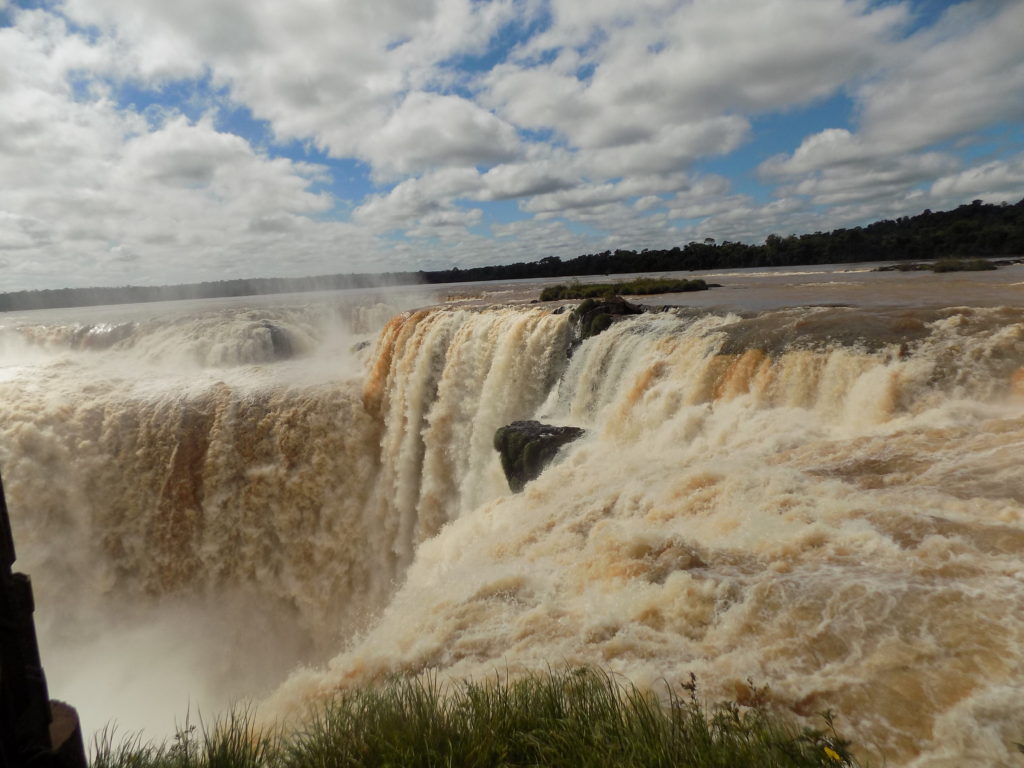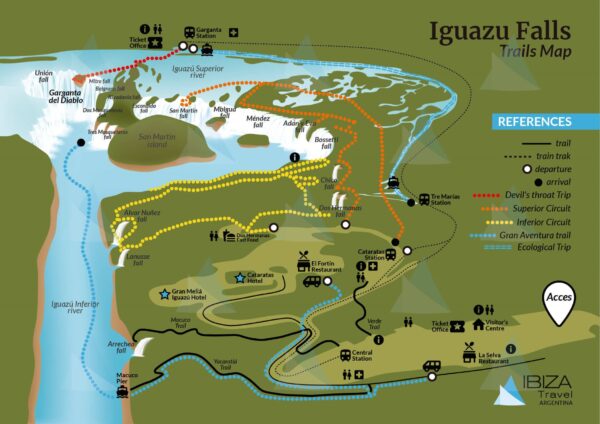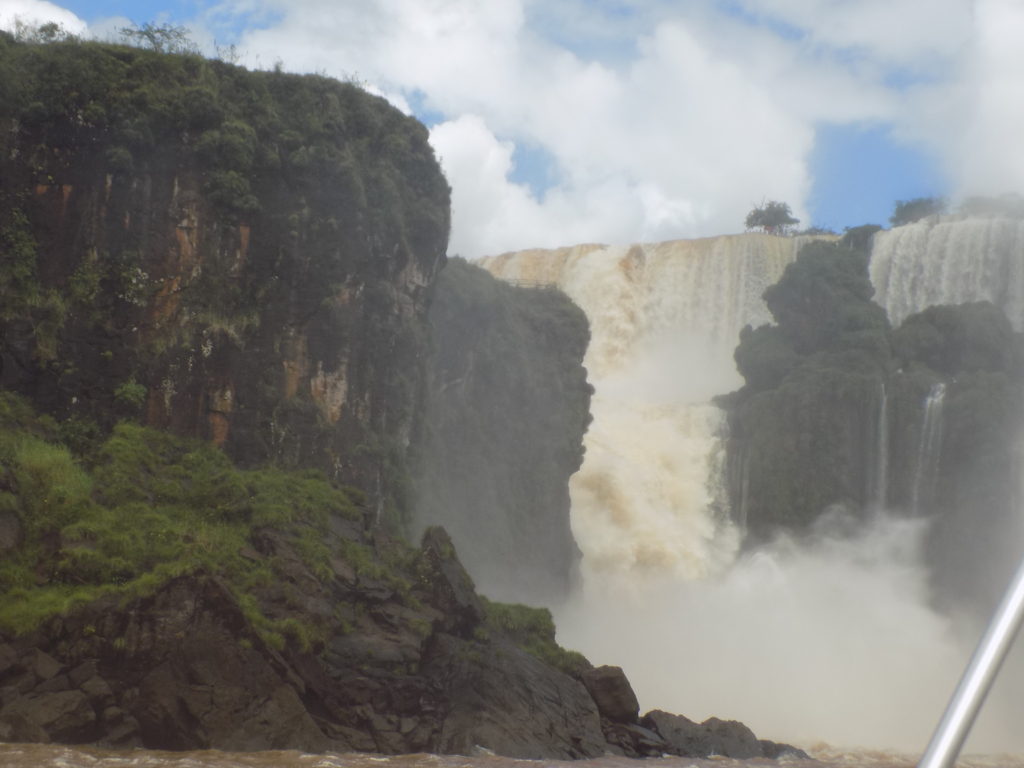No crying for me. Sunday in Argentina.
In some ways, Sunday was similar to Saturday and in others different. The first difference was that, returning to the falls, we had to cross an international border. However, this must be so common at this crossing that it was handled quickly and efficiently and we passed into Argentina without stress or incident.
Not only do the falls look different in viewing them from the Argentine side but the park is set up to move people quite differently. In Brazil, everyone travels on foot. In Argentina, there’s an electric train that loops from the Central Station near the park’s entrance to the Garganta de Diablo Station not far from the Devil’s Throat. Navigating this long section of the park as a pedestrian can be tricky so riding the electric train is a reasonable choice. Still, there’s plenty of walking to be done on the Argentine side. There are both wooded trails and man-made paths built over the water that allow visitors to get very close to the falls.
Ride this train to the Garaganta station
whence you’ll walk for a bit more than a kilometer along a deceptively calm stretch of the upper Iguazú River. Continue walking for about 10 minutes – ignoring the remnants of previous trails that have been wiped out – and the sound of the falls begins its crescendo. In another five minutes or so you are staring down the maw of the Devil’s Throat.

For a better sense of that experience, look for the video in the midst of this photo album.
After our walk to the Garganta del Diablo, Jill and I took the Great Adventure Jungle Ride and boat tour. This was Jan’s second trip to the falls and she had taken this excursion on her first visit so she and Berner stayed behind in the terrestrial part of the park and (I think) completed a walk around the Lower Circuit or, as it’s called on the map below from itravelargentina, the Inferior Circuit.

For Jill and me, the Jungle Ride segment of our excursion was disappointingly devoid of any exciting wildlife – though we did see some large spiders and their massive webs. The boat ride, on the other hand, was pure joy.
Although we were downstream of the falls, the ride toward the cataracts was, as you will see if you watch the video that captures about 20 seconds of sky and 10 seconds of waterfalls, quite bumpy. We skirted San Martin Island, waited for the pilot to shout, “Guarda tus cámaras!”, and squealed like delighted children as he steered us not once but twice under one of the falls.
I can’t speak for Jill but I was surprised that by the time we’d reunited with Jan and Berner my t-shirt and swim trunks were nearly dry. The four of us then took the roughly two kilometer walk along the Upper (Superior) Circuit to get up close and personal with a number of other individual cataracts.
Afterward, we returned to the van, and before crossing back into Brazil, stopped in the small park called Hito de los Tres Fronteras in the town of Puerto Iguazú. From this vantage point, one sees not only the confluence of the Iguazú and Paraná rivers but also the meeting of the borders of Argentina, Brazil, and Paraguay.
It had begun to drizzle so we kept our stop brief before returning for our final night in Brazil. Berner was still recovering from the effects of his overindulgence Saturday night and none of the other nearby restaurants were open so we opted to have dinner in the hotel. Since it was our last night in Brazil, it was here that I finally relented and joined Jill by ordering my first caipirinha. Admittedly, I’m not someone who enjoys hard drinks very much but I found this a pleasant enough combination of sweet and biting that it’s something I’d consider trying again.
Tomorrow we cross the border from one of the wealthiest countries in South America (in terms of per capita GDP) on our way to the capital of one of its poorest when we enter Paraguay at Ciudad del Este and take the six hour bus ride to Asunción.
